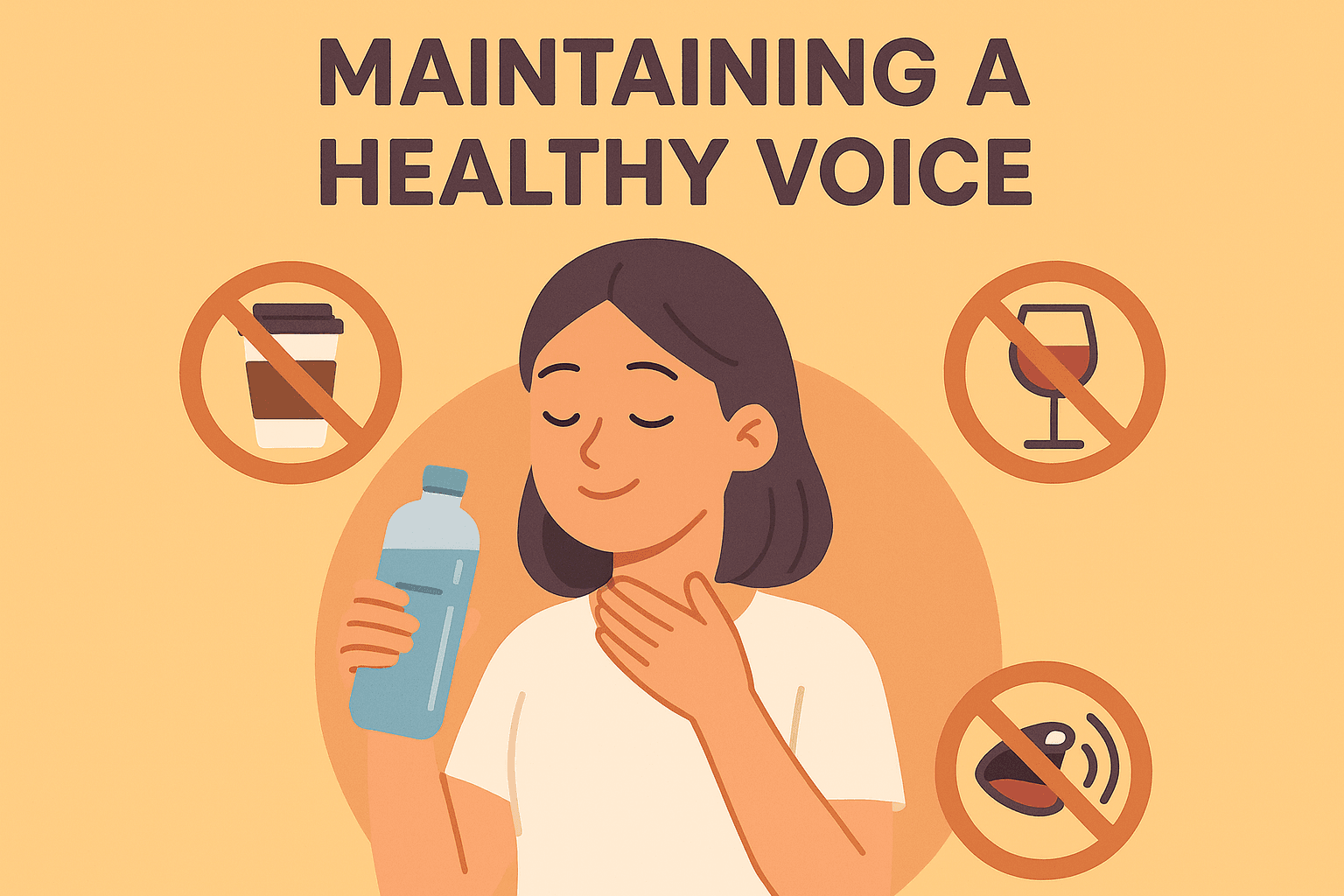
Art Gharana — 3 Mins read
Top 10 Easy Songs for Beginners
Vocal
 Have you ever wondered what your true singing potential is? Whether you’re an aspiring vocalist or simply someone who loves to sing in the shower, understanding your vocal range is the first step toward unlocking your full voice. From identifying whether you’re a soprano, alto, tenor, or bass, to figuring out which notes you can comfortably hit, knowing your voice type can completely transform the way you approach singing.
Have you ever wondered what your true singing potential is? Whether you’re an aspiring vocalist or simply someone who loves to sing in the shower, understanding your vocal range is the first step toward unlocking your full voice. From identifying whether you’re a soprano, alto, tenor, or bass, to figuring out which notes you can comfortably hit, knowing your voice type can completely transform the way you approach singing.
But how do you determine your vocal range accurately? Is there a reliable method to check your vocal range or a way to figure out your singing range without straining your voice? In this blog, we’ll explore practical techniques, insightful exercises, and expert tips to help you confidently assess your voice. You’ll also discover tools like vocal range charts and online tests that make the process easier than ever.
Whether you’re interested in classical, contemporary, or even Hindustani styles, understanding your voice will help you sing with more control, expression, and confidence. Ready to find out just how far your voice can go? Let’s dive in and uncover the secrets behind your unique vocal range.
 Before you dive into exercises and tests, it’s essential to understand what vocal range really means. Simply put, your vocal range is the span of notes you can comfortably sing, from the lowest to the highest. Knowing your range not only helps you choose songs that suit your voice but also guides you toward proper training and style development.
Before you dive into exercises and tests, it’s essential to understand what vocal range really means. Simply put, your vocal range is the span of notes you can comfortably sing, from the lowest to the highest. Knowing your range not only helps you choose songs that suit your voice but also guides you toward proper training and style development.
Have you ever wondered whether you’re a soprano, alto, tenor, or bass? These categories aren’t just labels—they give insight into your natural voice characteristics and strengths. For instance:
Understanding your voice type can also make it easier to navigate vocal challenges, like recognizing vocal breaks or identifying areas where your voice feels strained. For example, if you’re curious about what vocal type you are, simple exercises with scales or a vocal range chart can reveal surprising insights.
Exploring your vocal range isn’t just about technical measurement—it’s about discovering your personal sound. Whether you’re aiming for professional growth or simply want to sing with confidence, identifying your range lays the foundation for everything that follows. And if you’re looking for structured guidance, you can check out Online Western Vocal Classes to explore your voice in a professional setting.
By understanding your vocal range, you’re not just measuring notes—you’re unlocking the potential of your voice. Ready to learn how to assess it accurately? The next sections will guide you through step-by-step techniques and practical exercises.
 Before you jump into identifying your full vocal span, preparation is key. Just like athletes warm up before a workout, your voice needs gentle care to perform at its best. Have you ever tried to hit a high note without warming up? It can strain your vocal cords and even limit your results. By setting the stage properly, you ensure your vocal range test reflects your true potential.
Before you jump into identifying your full vocal span, preparation is key. Just like athletes warm up before a workout, your voice needs gentle care to perform at its best. Have you ever tried to hit a high note without warming up? It can strain your vocal cords and even limit your results. By setting the stage properly, you ensure your vocal range test reflects your true potential.
A relaxed, aligned posture can make a huge difference. Try standing tall, shoulders back, and chest open. Pair this with controlled breathing from your diaphragm, and you’ll notice your voice feels freer and more powerful.
In today’s digital age, technology can simplify the process. Apps and online tools allow you to check your vocal range in real time, record your attempts, and compare them to standard singing range tests. Not sure where to start? You can also consider professional guidance by booking a free trial class to receive personalized feedback and exercises tailored to your voice.
By investing time in proper preparation, you not only protect your voice but also gain a clearer understanding of your natural capabilities. When your body and voice are ready, testing your range becomes an accurate, insightful, and enjoyable experience.
 Once your voice is warmed up and ready, it’s time to explore the full extent of your singing potential. But how do you figure out your vocal range accurately? How can you tell which notes you can comfortably hit without straining? With the right techniques, you can map your voice confidently and even discover hidden strengths.
Once your voice is warmed up and ready, it’s time to explore the full extent of your singing potential. But how do you figure out your vocal range accurately? How can you tell which notes you can comfortably hit without straining? With the right techniques, you can map your voice confidently and even discover hidden strengths.
Using scales is a safe and structured way to test your voice. Try singing major or minor scales slowly, paying attention to comfort and clarity. If a note feels strained, it’s likely outside your natural range.
Recording your session allows you to replay and identify exact notes, helping you figure out your singing range more precisely. It’s also a great way to track progress over time.
Every voice has natural breaks—areas where your tone may flip or feel different. Being aware of these transition points, often called passaggi, can help you understand your unique vocal capabilities and plan exercises to strengthen them.
Curious about singing in different styles? Whether it’s classical, contemporary, or Hindustani, identifying your range in multiple contexts can provide deeper insights into your voice. For example, enrolling in Online Hindustani Vocal Classes can help you explore techniques specific to classical Indian styles while expanding your vocal flexibility.
By systematically testing your voice, you not only discover your comfortable notes but also build a foundation for expanding your range safely and effectively. And if you want personalized guidance, booking a free trial class ensures you receive expert feedback tailored to your voice.
Now that you’ve identified your current vocal range, it’s time to push your limits safely and effectively. Expanding your range isn’t about straining or forcing notes—it’s about building flexibility, strength, and control over your voice. Have you ever wondered how professional singers hit notes you thought were impossible? The secret lies in consistent practice and the right exercises.
###Resonance and Projection Drills
Every voice is different. Curious about which notes feel most natural or challenging? Tools like voice range charts or online tests such as which note can I hit websites can provide real-time feedback. For structured practice and expert guidance, consider enrolling in Online Western Vocal Classes to receive tailored exercises that match your voice type and goals.
With consistent practice, the right techniques, and careful monitoring, you can gradually increase both your upper and lower range while keeping your voice healthy. Expanding your vocal range isn’t just about hitting higher notes—it’s about discovering the full potential of your unique voice.
 Expanding your vocal range and mastering techniques is exciting, but none of it matters if your voice isn’t healthy. Have you ever pushed your voice too hard and felt strain or fatigue? Maintaining vocal health ensures longevity and consistent performance, whether you’re singing professionally or for fun.
Expanding your vocal range and mastering techniques is exciting, but none of it matters if your voice isn’t healthy. Have you ever pushed your voice too hard and felt strain or fatigue? Maintaining vocal health ensures longevity and consistent performance, whether you’re singing professionally or for fun.
Sometimes, guidance from experts can make all the difference. Whether you’re curious about what is the male voice vocal range, want to test how deep is my voice, or simply wish to expand your skills safely, professional classes provide structure and personalized feedback. Consider enrolling in Online Hindustani Vocal Classes or booking a free trial class to learn techniques that protect and strengthen your voice while helping you grow as a singer.
By prioritizing vocal health, you’re not just preserving your range—you’re building a sustainable, strong, and expressive voice that can adapt to any style or performance. Healthy habits today mean a lifetime of confident singing tomorrow.
Understanding and exploring your vocal range is more than just a technical exercise—it’s a journey of discovering your unique voice and its full potential. Have you noticed how much clarity and confidence you gain once you know where your comfortable notes lie? From identifying whether you’re a soprano, alto, tenor, or bass, to practicing safe exercises that expand your range, each step brings you closer to singing with control, expression, and joy.
Remember, testing your voice isn’t a one-time task. Regularly checking your progress with tools like vocal range charts or online vocal range tests can help you stay on track and uncover new strengths. And if you’re ready to take your skills further, professional guidance can make all the difference. Classes such as Online Western Vocal Classes or Online Hindustani Vocal Classes provide structured training, personalized feedback, and exercises tailored to your voice type.
Curious about how high or low your voice can go? Want to explore your style and enhance your range safely? You can even book a free trial class to experience expert guidance firsthand. By investing in your voice today, you’re not just learning notes—you’re cultivating a lifelong skill that brings confidence, joy, and the freedom to express yourself through song.
So, what are you waiting for? Take the first step, discover your singing range, and let your voice soar to new heights!